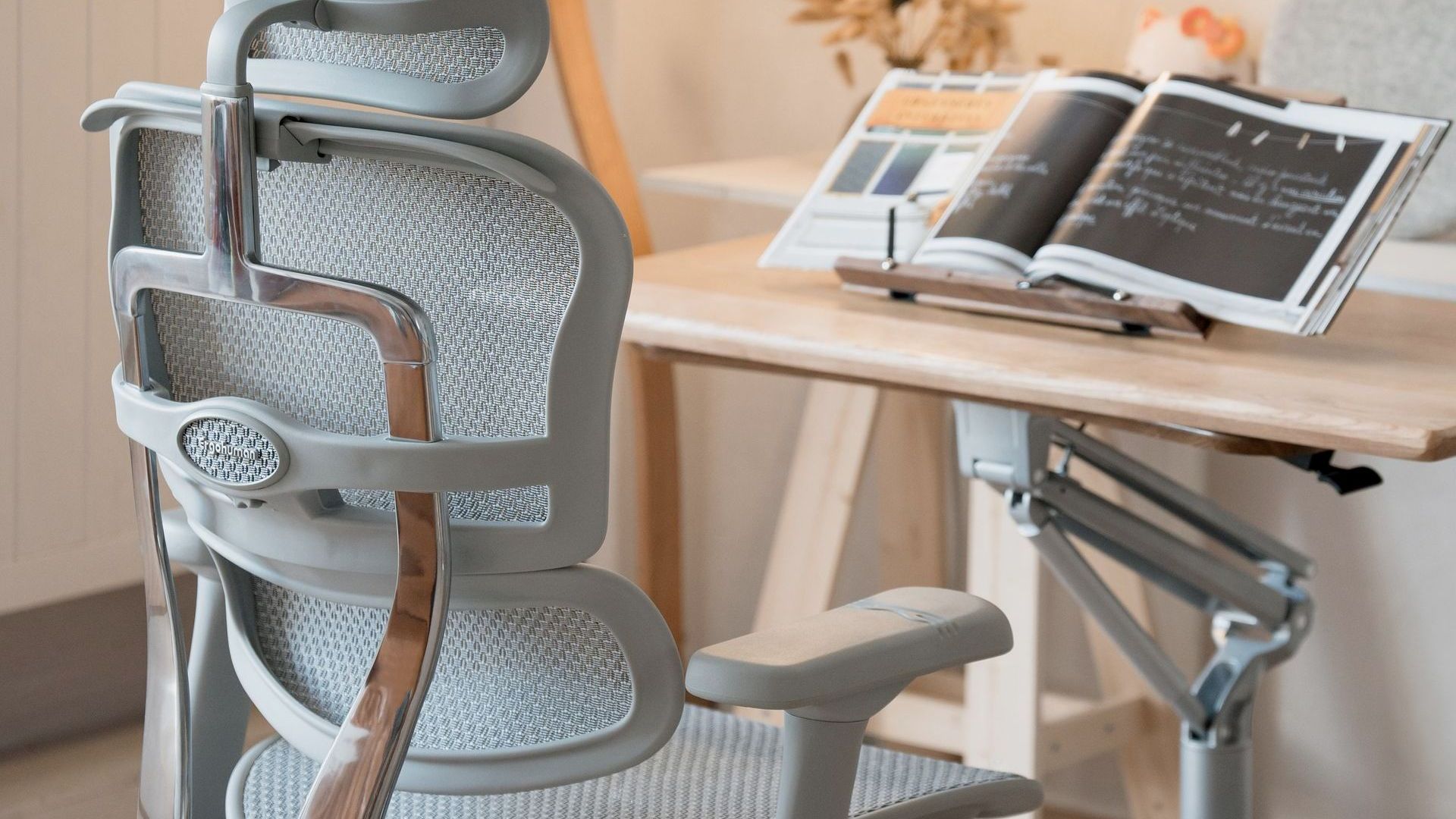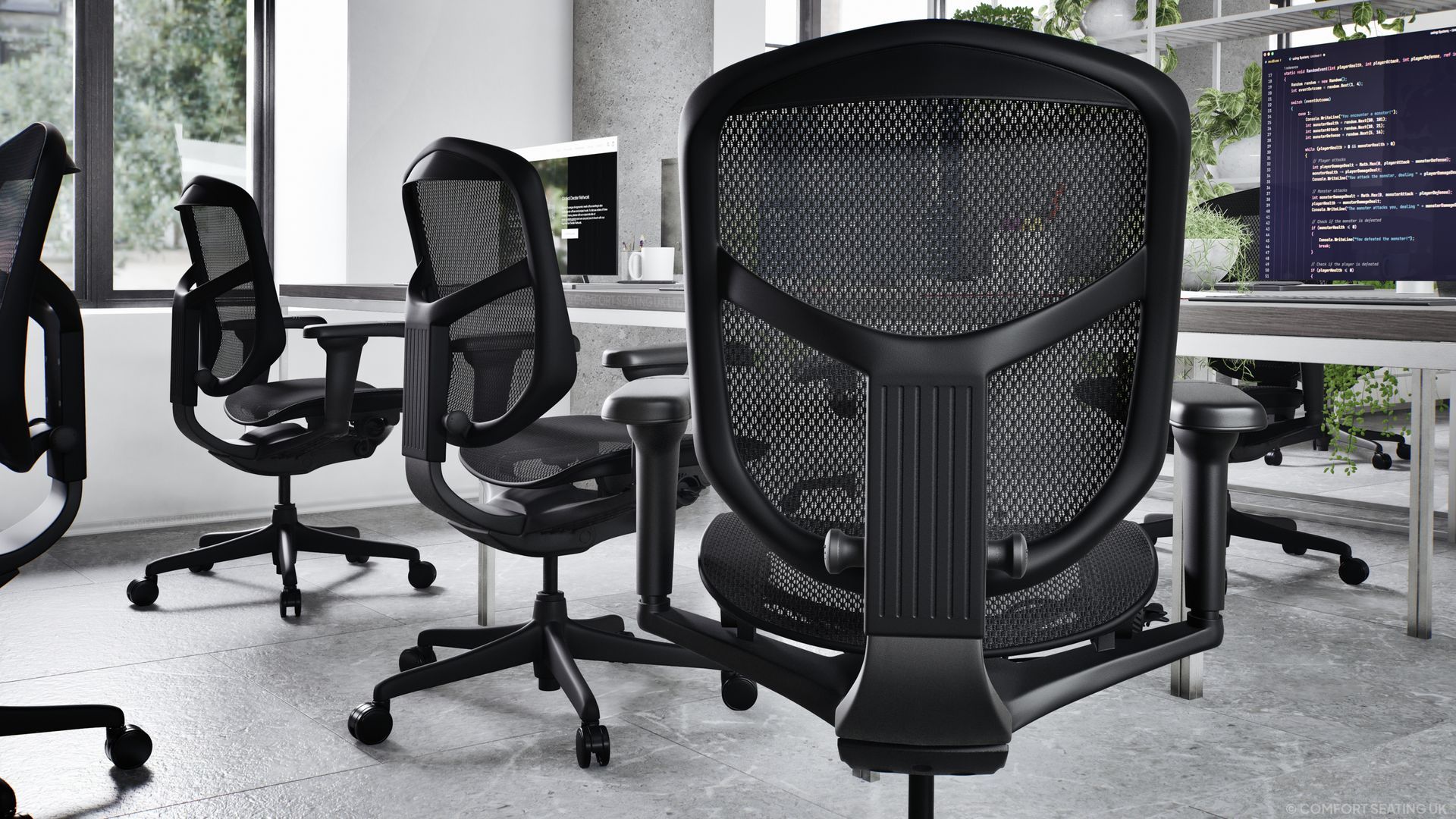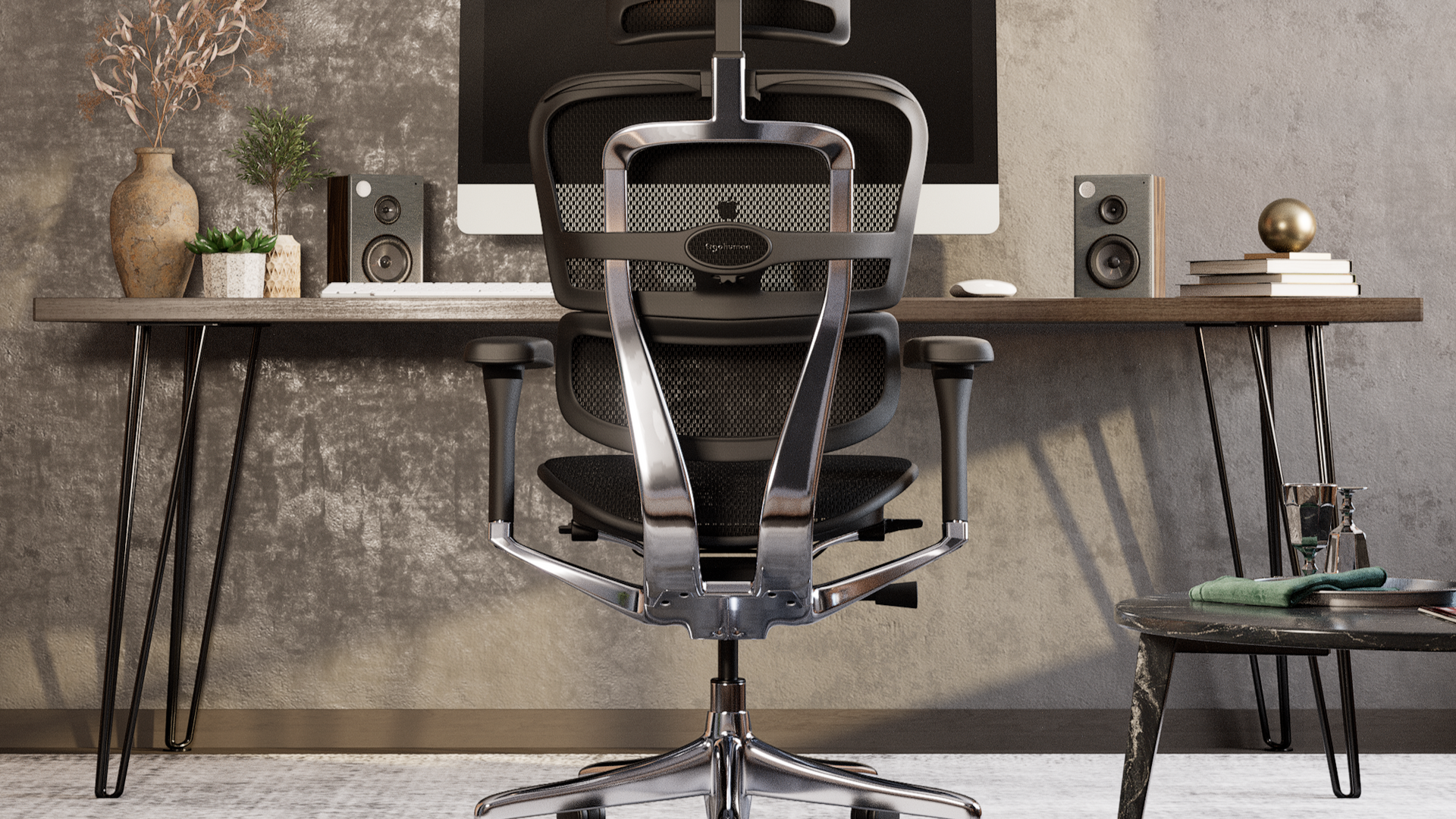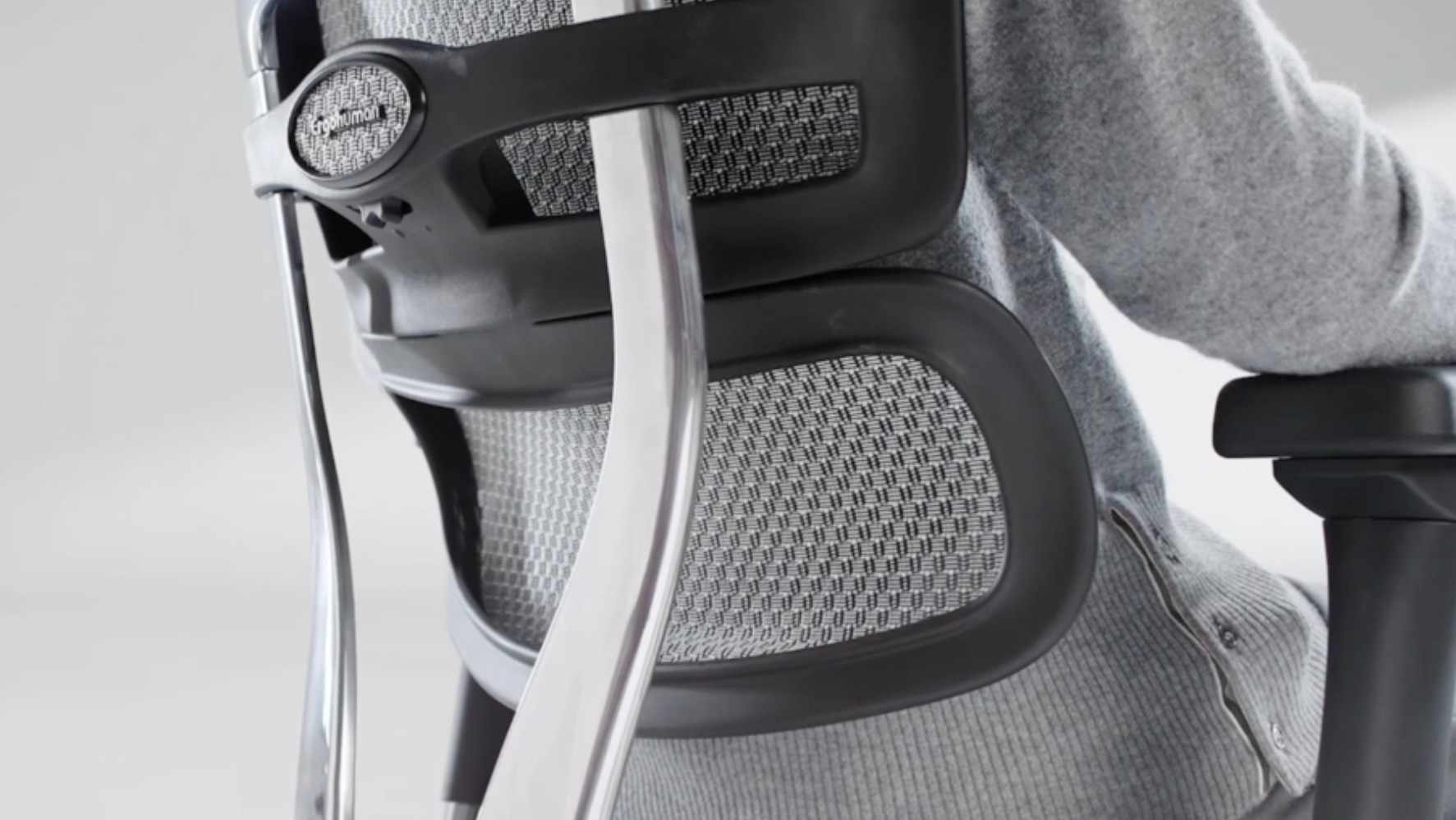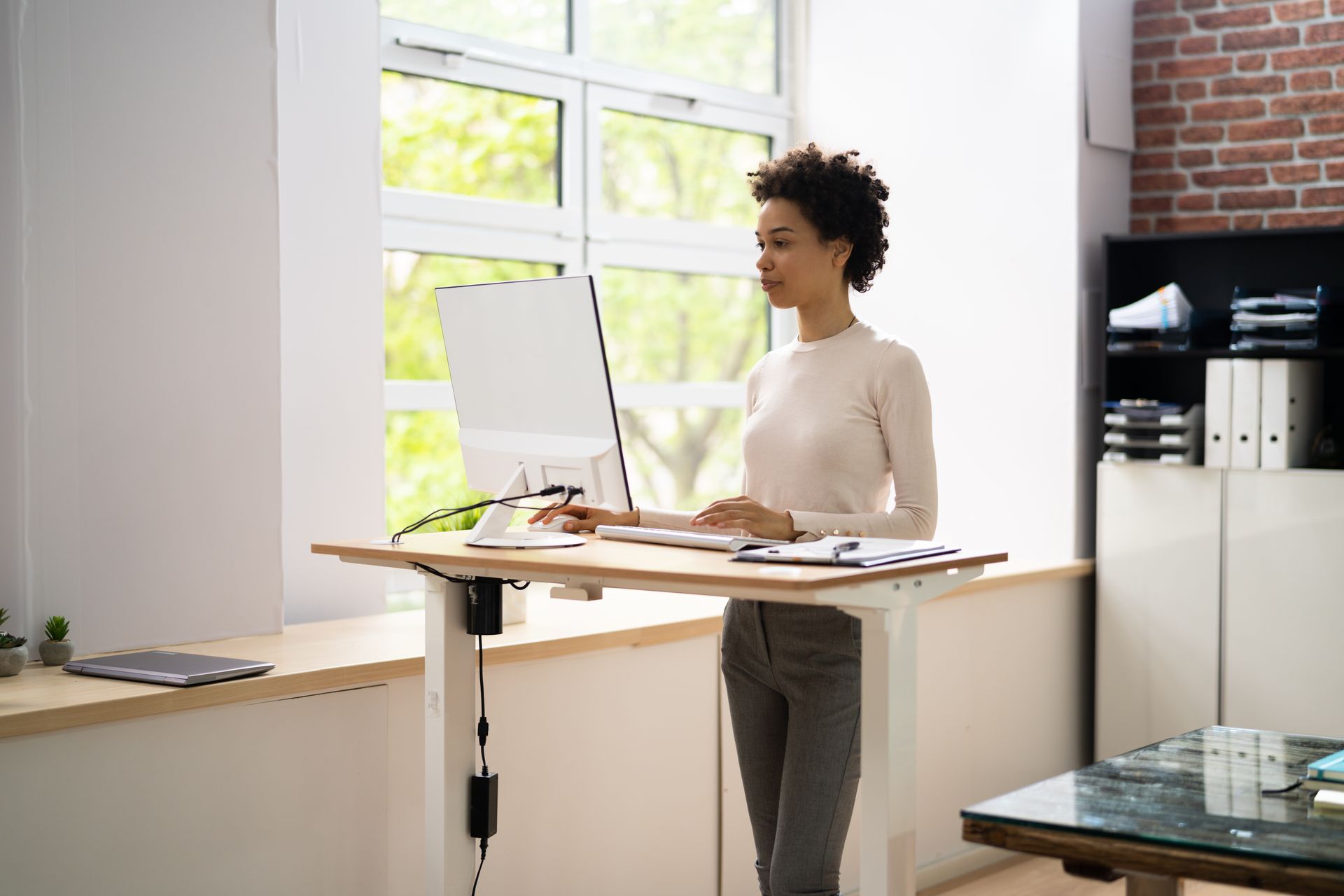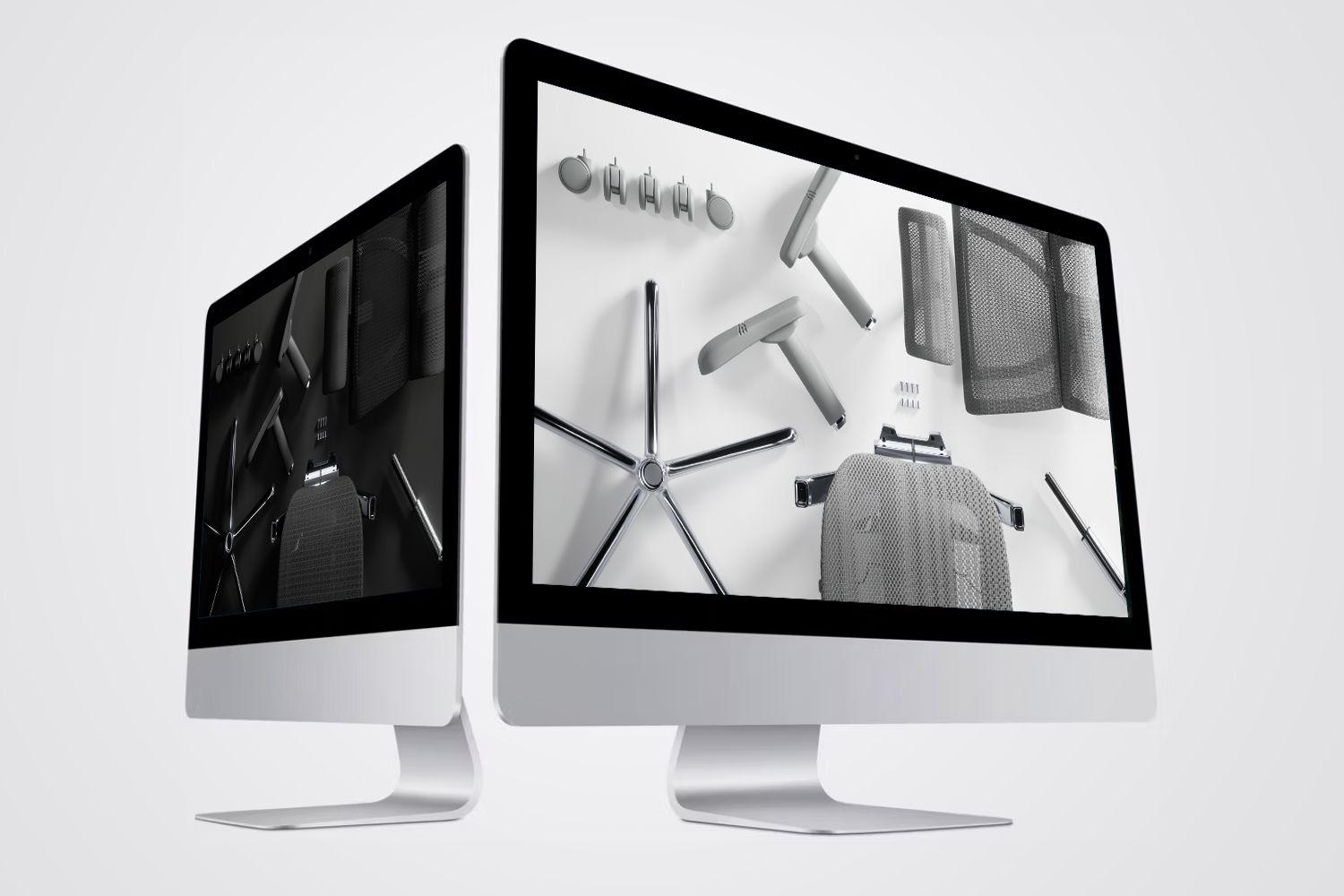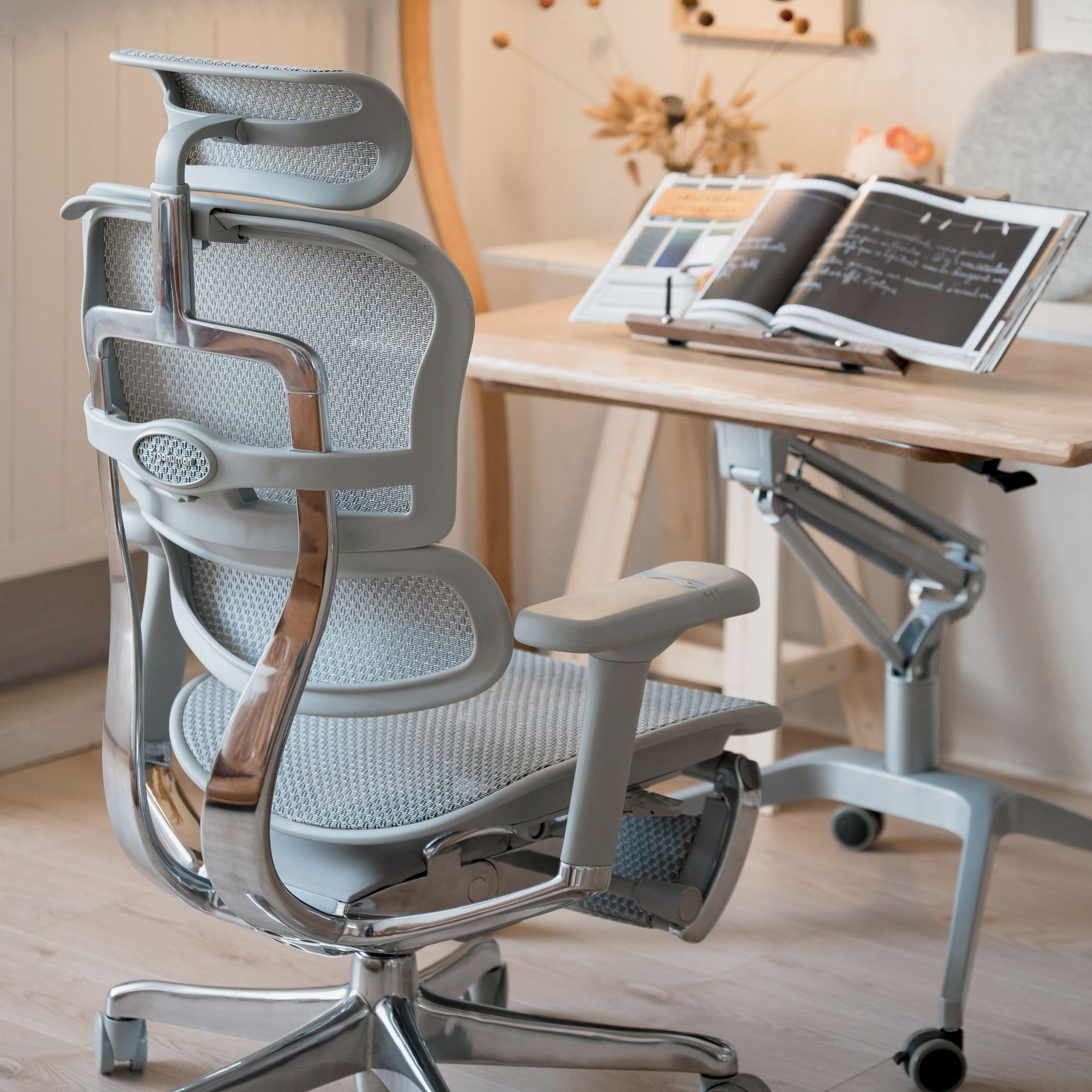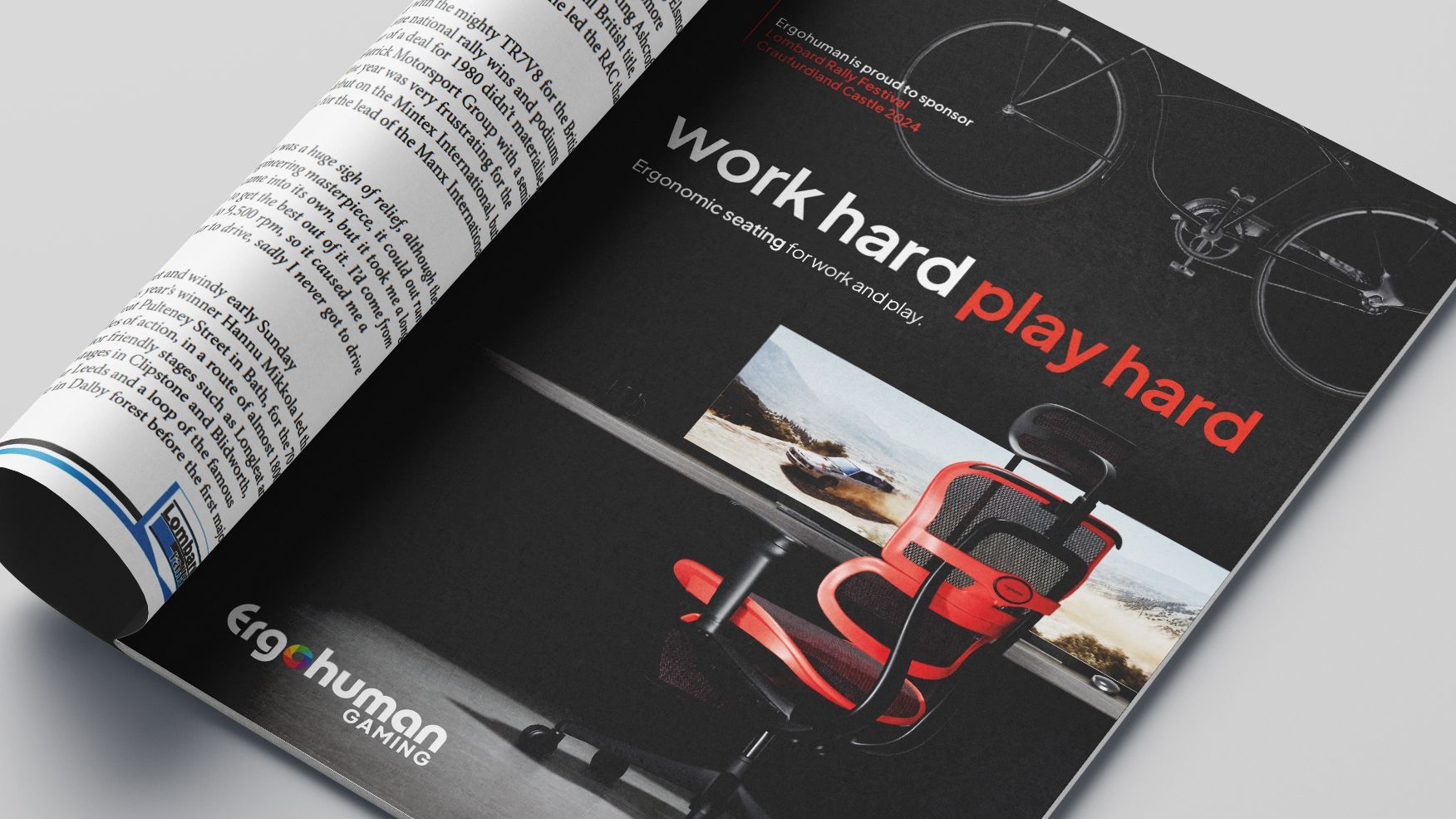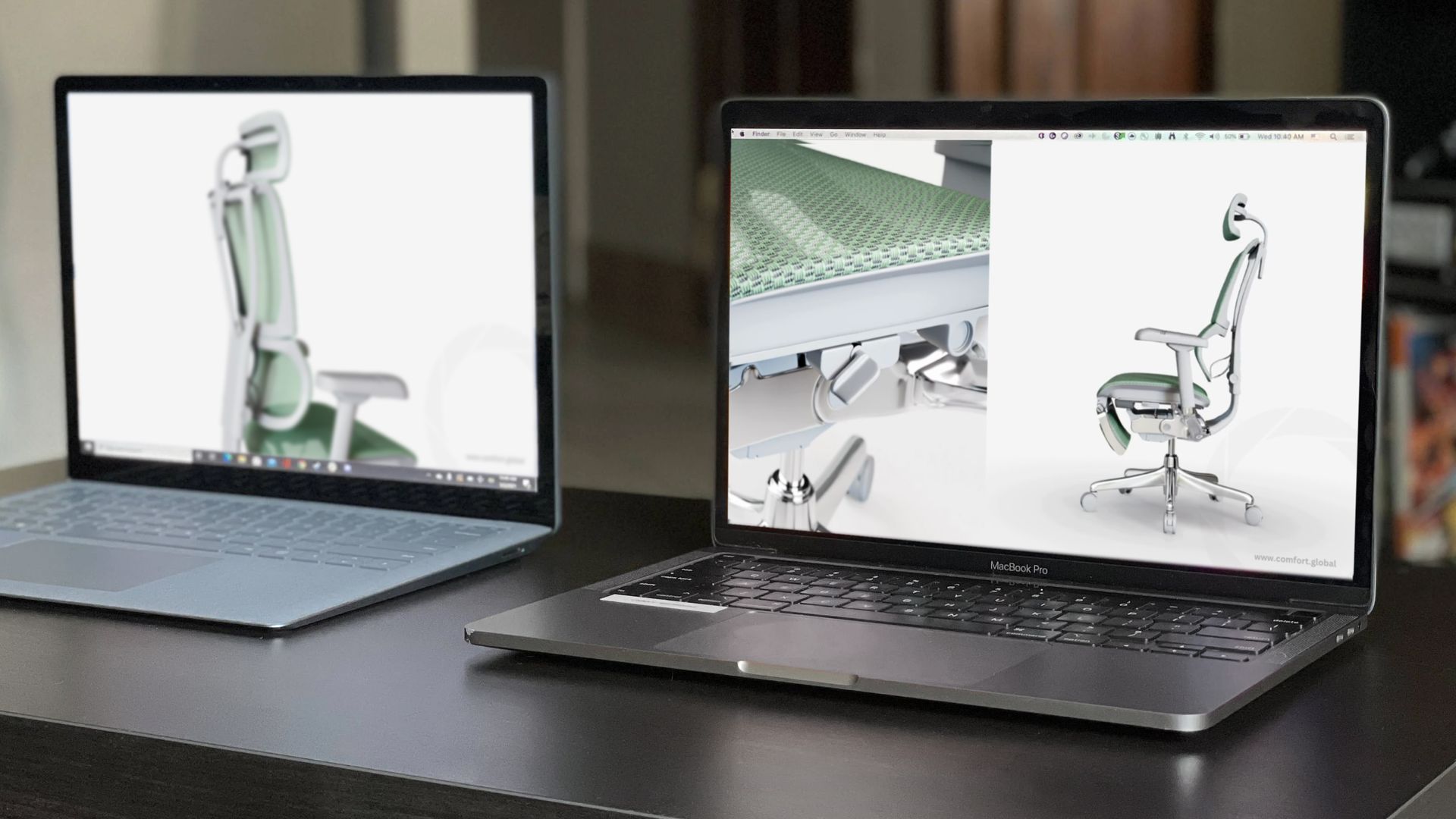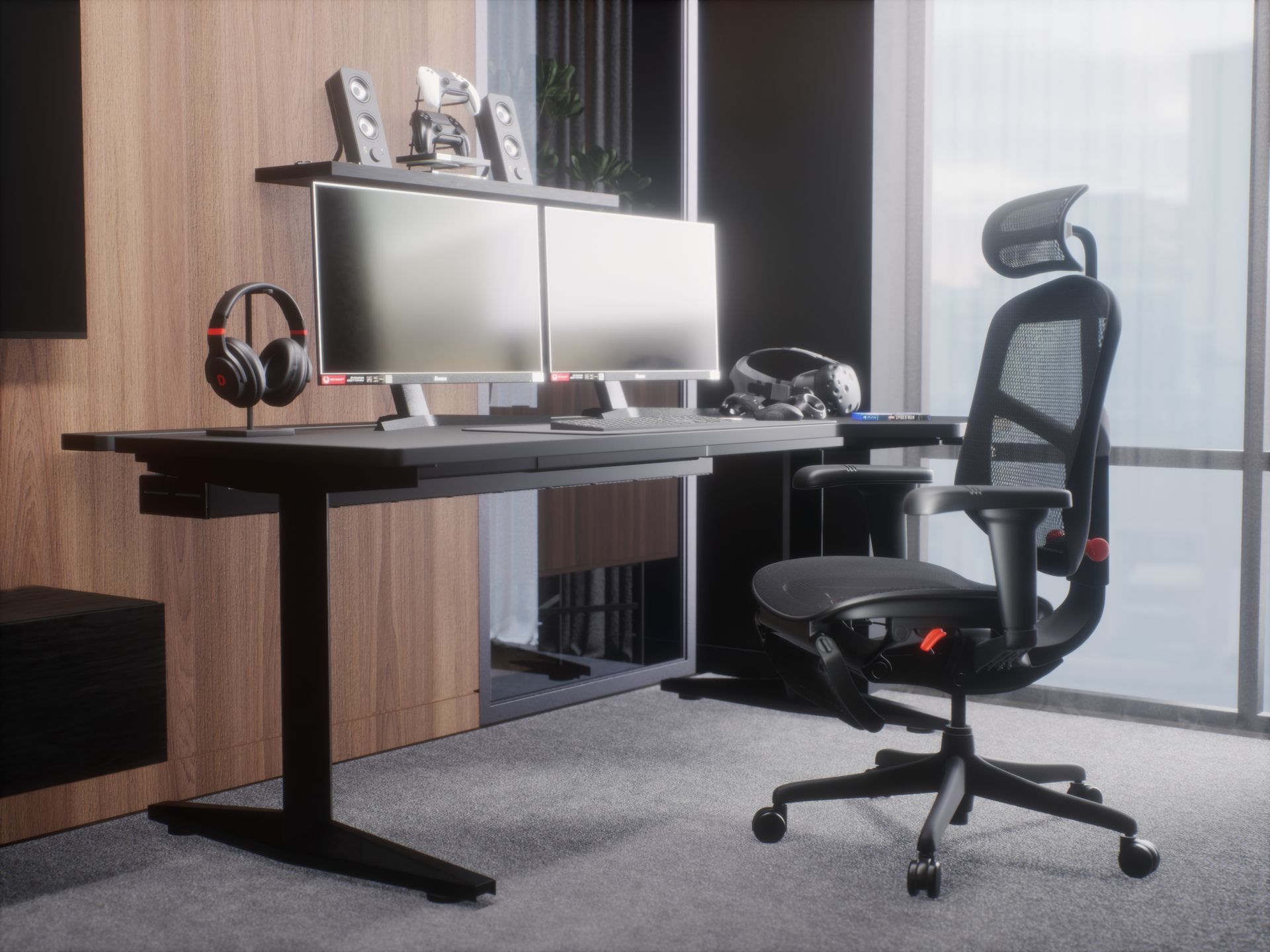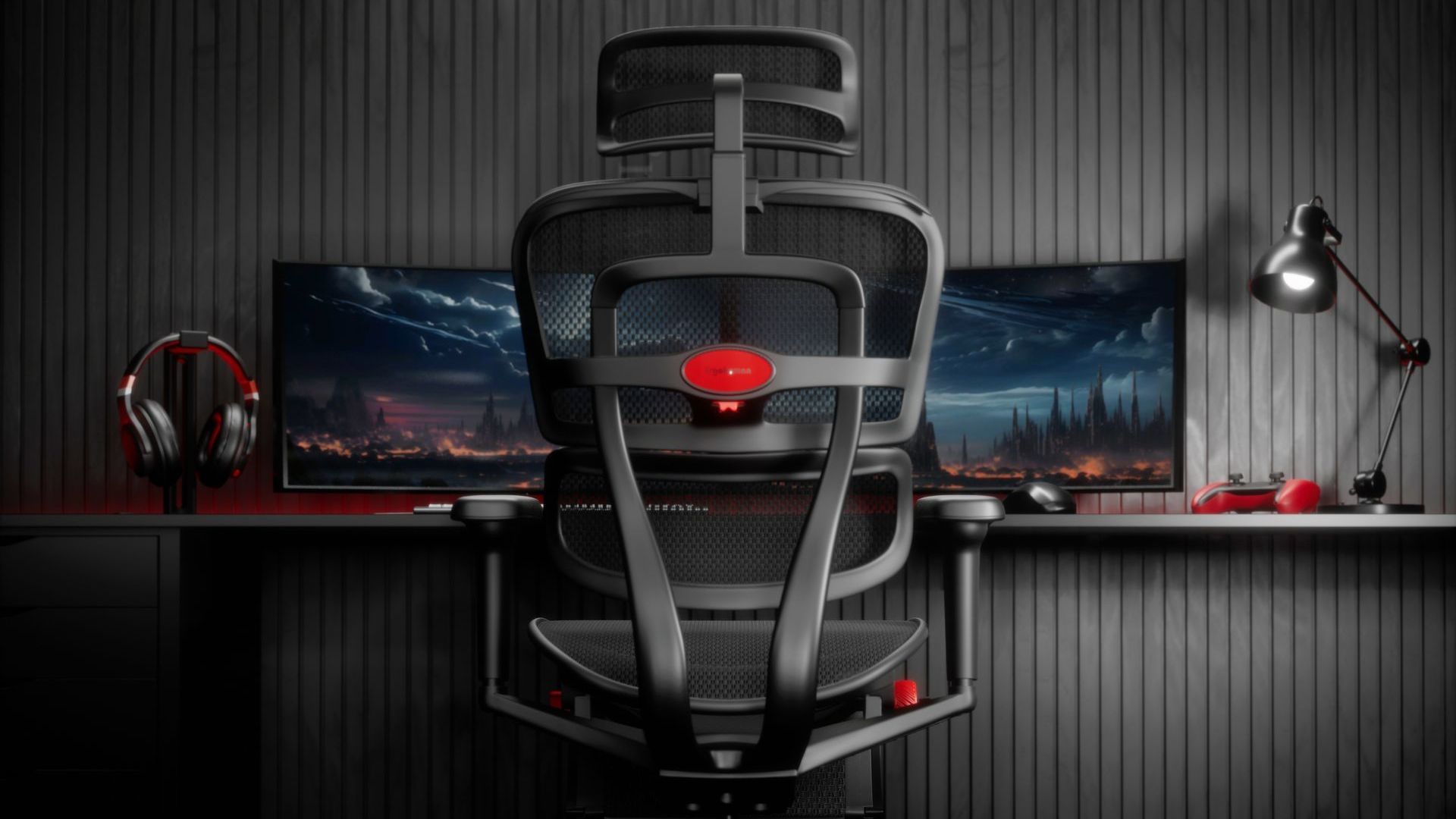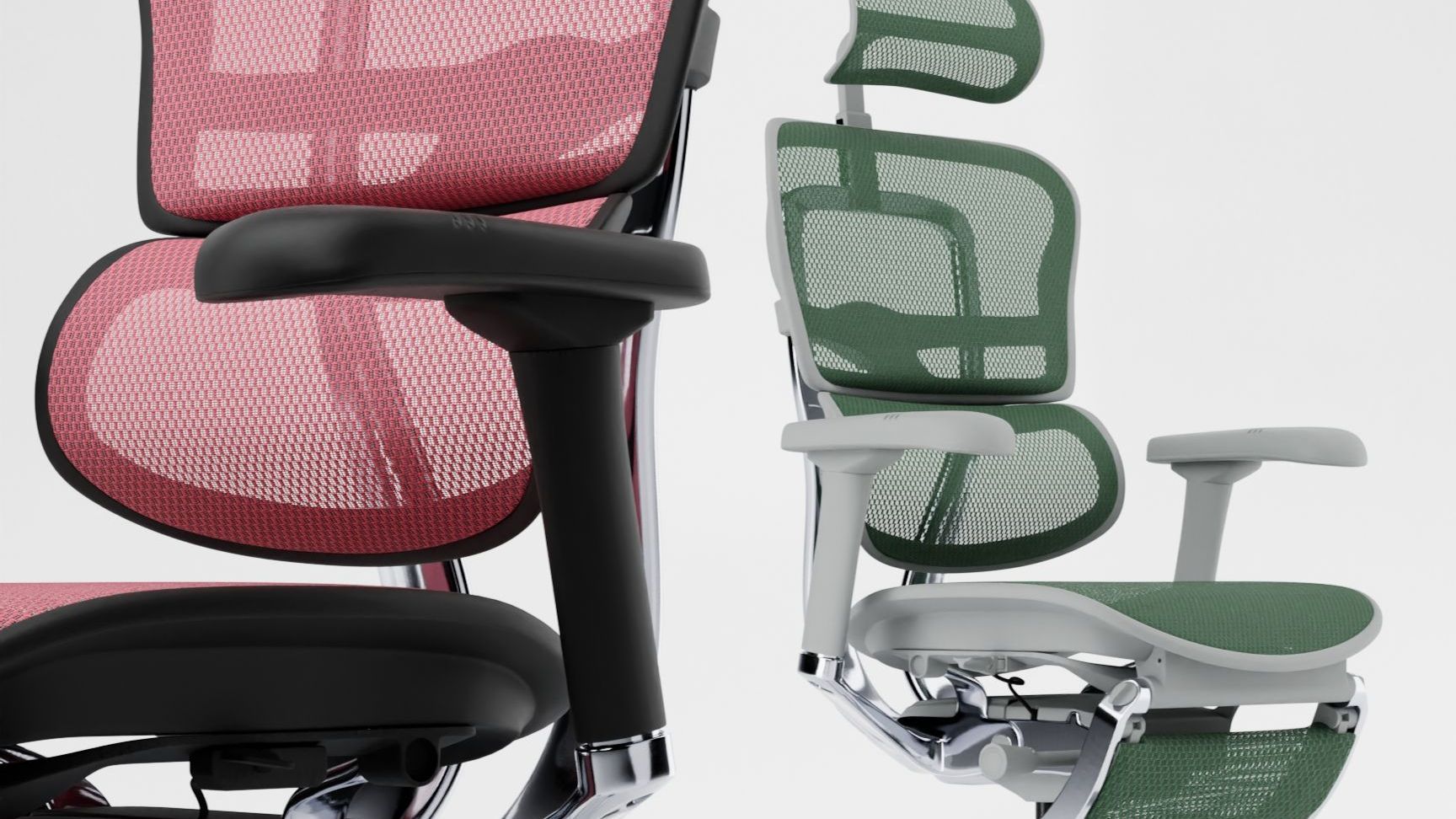Office posture: practising healthy posture at your desk
You can have the most ergonomic desk set-up possible and still default to poor posture. Practising poor posture for long periods can result in serious health issues, including weakened muscles, pain, fatigue, incontinence, slowed digestion, headaches, and low mood, according to chiropractic physician Dr Murphy at Brown University⁽¹⁾.
The best investment you can make for your posture when you sit at a desk all day is a chair that allows you to sit upright but also enables you to recline with full back support. This type of ergonomic chair ensures you can practice dynamic seating and healthy posture without additional strain.
What is good posture, and why does it matter?
The position you hold yourself in while sitting, standing, or even lying down is important. Practising good posture allows you to move with little to no strain or pain. You might hear good posture described as having a straight back, with your shoulders pulled back and your tummy in. However, good posture goes beyond being upright all the time, as you will need to adopt different postures throughout your day, depending on your task.
Instead, a good posture is one that is safe, well-balanced, allows you to do your work easily, and does not cause damage or strain to your body. You’ll notice a posture is poor when it’s hard to hold it for a long time, it requires effort to remain upright, or it causes you to feel stiff.
Good posture is healthy posture. Without it, you may experience misalignment, a painful spine that is more prone to injury, neck and shoulder pain, poor balance, poor digestion, and it can even make it harder to breathe, as reported by MedlinePlus⁽²⁾.
There are two types of posture: static and dynamic. When you are seated, standing still or lying down, you are practising static posture. Dynamic posture is implemented when you’re moving: exercising, stretching, or just wandering around. However, in a good ergonomic office chair, you will be able to adopt both dynamic and static posture.
Practicing healthy posture in an office chair
When seated at a desk for part or all of your day, practising healthy posture is crucial. Not only will it reduce pain and strain, but it will free up your mind to focus on your work rather than the discomfort of sitting all day. The following practices will ensure a healthy and comfortable posture while you’re at your desk.
List of Services
-
Balanced headItem Link List Item 1
Sit upright in a chair with good lumbar support so that your head position is balanced. Don’t jut your head forward, as this will cause unnecessary strain on your back, neck, and shoulders. You should also ensure that you aren’t reaching for your mouse and keyboard, which can lead to a forward head position. Keep these items close to you so that your elbows remain beside your body.
-
Keep your back against your seatItem Link List Item 2
It’s important to sit with your back against the backrest of the chair. It’s easy to lean forward a bit, especially if you haven’t set up your chair correctly. However, when your back isn’t against the backrest, you will apply more strain and pressure to your back, which quickly causes pain and discomfort.
The most comfortable way to achieve this sitting position is to sit as far back in the chair as you can so that your lower back is aligned with the chair’s lumbar support system. This also prevents posterior pelvic sag. Then, position the recline of your chair in what feels most comfortable for you. If you find the most upright position hard to sustain and causes a lot of strain, recline the chair ever so slightly so that gravity is on your side. With the Ergohuman office chairs, the first lockable recline position is nice and upright while still allowing you to lean back slightly so you aren’t forcing yourself to retain an upright position that feels unnatural.
-
Use the lumbar support correctlyItem Link List Item 3
Make sure you position a lumbar support system correctly. Raise or lower the backrest height to ensure the lumbar support fits in the curve of your spine. This offers you the most comfort so you can easily maintain a healthy posture all day.
-
Correct your anglesItem Link List Item 4
One of the most important steps when setting up your office chair is to ensure it works well with your desk set-up. While it’s important to set your seat height so that your feet are flat on the floor and your knees are at a 90-degree angle, you should also ensure that your arms are at a 90-degree angle to the desk.
If you have a height-adjustable desk, you can change the height of both your desk and chair so that they work together to give you the most comfortable set-up. It also helps to adjust the height of the arm support on the office chair to allow the chair to go under the desk so you are closer to your tools and can practice correct posture with more ease.
If you set your seat height to align with your keyboards and mouse and find that your feet are not comfortably resting flat onthe floor, you can use an independent height-adjustable footrest or stool to give your legs proper support.
-
Position your legs correctlyItem Link
Keep your knees at a 90-degree angle with your feet flat on the floor or a footrest. Avoid extending or flexing your legs, and instead, keep your heels on the ground.
Also, ensure a two-finger gap between the back of your knees and the front of the seat. You can adjust the seat depth on the Ergohuman chairs. If you find that the backs of your knees still touch the front of the chair despite adjusting the depth, the chair might be too big for you.
-
Utilise free-float recline mode Write a description for this list item and include information that will interest site visitors. For example, you may want to describe a team member's experience, what makes a product special, or a unique service that you offer.
Item Link
the next posture is the best posture.
If you need to take a break from a static posture, using free-float recline mode, switching your desk to standing mode, or taking a short walk around the office is a great way to keep your body moving.
List of Services
-
Position your screen correctlyItem Link List Item 1
When working with a computer or laptop, ensure that the screen is at a fingertip distance away from you and that the top of the screen is at eye level. This will prevent strain on the eyes and neck. If you’re using two screens equally, put the join of the screens directly in front of you. Rotate your chair rather than your head where possible.
If you use two screens but look at one more than the other, position the main one directly in front of you and the one you use less frequently as close to the side as possible. If you work on a laptop, try to use an external monitor or elevate your laptop on a stand and use an external mouse and keyboard.
-
Set reminders to take breaksItem Link List Item 2
If you struggle to get up and move around the office or find yourself slouching even when your chair is set up correctly, we recommend setting reminders. Set reminders every 15 minutes to check your posture and another reminder every 30 minutes to move, even if it’s just for a minute.
If you have a standing desk, aim to stand for 10 minutes every hour, but remember that standing all day isn’t better than sitting all day. Your body needs a variation of positions for the best comfort.
The most comfortable way to achieve this sitting position is to sit as far back in the chair as you can so that your lower back is aligned with the chair’s lumbar support system. This also prevents posterior pelvic sag. Then, position the recline of your chair in what feels most comfortable for you. If you find the most upright position hard to sustain and causes a lot of strain, recline the chair ever so slightly so that gravity is on your side. With the Ergohuman office chairs, the first lockable recline position is nice and upright while still allowing you to lean back slightly so you aren’t forcing yourself to retain an upright position that feels unnatural.
Common posture mistakes
Being sedentary
Our bodies want to move. Even though you work at a desk, it doesn’t mean you need a sedentary lifestyle. Remain active outside working hours and aim to move around every 20-30 minutes during your working day.
Hunching your shoulders
Once you hunch your shoulders, everything else follows easily. This posture curves the upper spine and pulls your head and neck forward and down. Instead, lengthen your spine and relax your shoulders.
Tilted pelvis
Often, people sit with their hips and pelvis tilted forward, misaligning them with the spine. This overexaggerates the curve of the lower back, which can tighten the back muscles and lead to musculoskeletal pain and issues.
Looking downwards
Looking down as you type, read or use a mobile device can quickly lead to bad posture and extra strain. Ensure that the top of your monitor is at eye-level height, and if you need to read something in a book or on your phone, lean back in your chair and position the armrests so that your forearms and spine are supported.
Poking chin
If your chair is too low and you need to lean in to see your screen, the chin pokes forward, which can put pressure on the spine.
Sitting oddly
When sitting for long periods, it’s instinctive to want to sometimes tuck your feet underneath your chair or even cross your legs. These positions put extra pressure on your back and hips. Try maintaining a 90-degree angle in the knees and arms for the best posture.
Sitting too straight
Adopting a military-style posture with your spine vertical and your chest forward also puts pressure on the spine. Aim to be ever so slightly reclined with proper lumbar support so gravity is on your side and your back feels gently supported.
Ignoring the core
Engaging your core muscles when sitting can support the spine, making it easier to maintain healthy posture. Outside of work, exercise the core muscles regularly to strengthen your body; this will make it easier to practice good posture.
Getting too comfortable
We know working from the bed or the couch is tempting if you’re a remote employee, but this is not good for your spine. Invest in an ergonomic office chair and sturdy desk, and you will experience transformative comfort.
The benefits of proper posture
We don’t recommend good posture because it looks good or professional. We recommend it because it’s the best thing for your back. Practising healthy posture has many health benefits that will make the time spent at your desk much more comfortable.
The most significant benefit is that it reduces back pain, especially lower back pain. A supported back and frequent breaks will take the pressure off your spine, including the intervertebral discs, ligaments, muscles, and facet points, according to Healthline⁽³⁾. It also reduces stress on the bones and joints, decreasing the risk of osteoarthritis, says Rush University Medical Centre⁽⁴⁾.
Practising good posture may also lead to fewer headaches due to decreased muscle tension. Maintaining good posture and incorporating stretches into your daily routine can have a positive effect on tension headaches and migraines.
Good posture can also improve energy levels, strengthen core muscles, help respiratory function, improve circulation and digestion, and boost your mood.
How Ergohuman office chairs can help your posture
Our mesh office chairs are designed to help you achieve and maintain a healthy posture. You must first set the chair up correctly according to your anthropometric measurements. Once done, ensure that you make subtle changes, like reclining when possible, to adopt a dynamic sitting position.
Incorporate frequent breaks into your routine. After a week or two, you should notice a significant difference in your comfort and your overall spine health.
If you are considering Ergohuman chairs for your project and have further questions about our office chairs and their features, explore our website or
contact us for assistance.
OTHER
POSTS
Comfort Seating UK Ltd
Riverbank Mill
2 Stoneygate Road
Newmilns, Ayrshire
